Fluid and pharmacological agents for adhesion prevention after gynaecological surgery
- PMID: 32683695
- PMCID: PMC7388178
- DOI: 10.1002/14651858.CD001298.pub5
Fluid and pharmacological agents for adhesion prevention after gynaecological surgery
Abstract
Background: Adhesions are fibrin bands that are a common consequence of gynaecological surgery. They are caused by conditions that include pelvic inflammatory disease and endometriosis. Adhesions are associated with comorbidities, including pelvic pain, subfertility, and small bowel obstruction. Adhesions also increase the likelihood of further surgery, causing distress and unnecessary expenses. Strategies to prevent adhesion formation include the use of fluid (also called hydroflotation) and gel agents, which aim to prevent healing tissues from touching one another, or drugs, aimed to change an aspect of the healing process, to make adhesions less likely to form.
Objectives: To evaluate the effectiveness and safety of fluid and pharmacological agents on rates of pain, live births, and adhesion prevention in women undergoing gynaecological surgery.
Search methods: We searched: the Cochrane Gynaecology and Fertility Specialised Register, CENTRAL, MEDLINE, Embase, PsycINFO, and Epistemonikos to 22 August 2019. We also checked the reference lists of relevant papers and contacted experts in the field.
Selection criteria: Randomised controlled trials investigating the use of fluid (including gel) and pharmacological agents to prevent adhesions after gynaecological surgery.
Data collection and analysis: We used standard methodological procedures recommended by Cochrane. We assessed the overall quality of the evidence using GRADE methods. Outcomes of interest were pelvic pain; live birth rates; incidence of, mean, and changes in adhesion scores at second look-laparoscopy (SLL); clinical pregnancy, miscarriage, and ectopic pregnancy rates; quality of life at SLL; and adverse events.
Main results: We included 32 trials (3492 women), and excluded 11. We were unable to include data from nine studies in the statistical analyses, but the findings of these studies were broadly in keeping with the findings of the meta-analyses. Hydroflotation agents versus no hydroflotation agents (10 RCTs) We are uncertain whether hydroflotation agents affected pelvic pain (odds ratio (OR) 1.05, 95% confidence interval (CI) 0.52 to 2.09; one study, 226 women; very low-quality evidence). It is unclear whether hydroflotation agents affected live birth rates (OR 0.67, 95% CI 0.29 to 1.58; two studies, 208 women; low-quality evidence) compared with no treatment. Hydroflotation agents reduced the incidence of adhesions at SLL when compared with no treatment (OR 0.34, 95% CI 0.22 to 0.55, four studies, 566 women; high-quality evidence). The evidence suggests that in women with an 84% chance of having adhesions at SLL with no treatment, using hydroflotation agents would result in 54% to 75% having adhesions. Hydroflotation agents probably made little or no difference to mean adhesion score at SLL (standardised mean difference (SMD) -0.06, 95% CI -0.20 to 0.09; four studies, 722 women; moderate-quality evidence). It is unclear whether hydroflotation agents affected clinical pregnancy rate (OR 0.64, 95% CI 0.36 to 1.14; three studies, 310 women; moderate-quality evidence) compared with no treatment. This suggests that in women with a 26% chance of clinical pregnancy with no treatment, using hydroflotation agents would result in a clinical pregnancy rate of 11% to 28%. No studies reported any adverse events attributable to the intervention. Gel agents versus no treatment (12 RCTs) No studies in this comparison reported pelvic pain or live birth rate. Gel agents reduced the incidence of adhesions at SLL compared with no treatment (OR 0.26, 95% CI 0.12 to 0.57; five studies, 147 women; high-quality evidence). This suggests that in women with an 84% chance of having adhesions at SLL with no treatment, the use of gel agents would result in 39% to 75% having adhesions. It is unclear whether gel agents affected mean adhesion scores at SLL (SMD -0.50, 95% CI -1.09 to 0.09; four studies, 159 women; moderate-quality evidence), or clinical pregnancy rate (OR 0.20, 95% CI 0.02 to 2.02; one study, 30 women; low-quality evidence). No studies in this comparison reported on adverse events attributable to the intervention. Gel agents versus hydroflotation agents when used as an instillant (3 RCTs) No studies in this comparison reported pelvic pain, live birth rate or clinical pregnancy rate. Gel agents probably reduce the incidence of adhesions at SLL when compared with hydroflotation agents (OR 0.50, 95% CI 0.31 to 0.83; three studies, 538 women; moderate-quality evidence). This suggests that in women with a 46% chance of having adhesions at SLL with a hydroflotation agent, the use of gel agents would result in 21% to 41% having adhesions. We are uncertain whether gel agents improved mean adhesion scores at SLL when compared with hydroflotation agents (MD -0.79, 95% CI -0.82 to -0.76; one study, 77 women; very low-quality evidence). No studies in this comparison reported on adverse events attributable to the intervention. Steroids (any route) versus no steroids (4 RCTs) No studies in this comparison reported pelvic pain, incidence of adhesions at SLL or mean adhesion score at SLL. It is unclear whether steroids affected live birth rates compared with no steroids (OR 0.65, 95% CI 0.26 to 1.62; two studies, 223 women; low-quality evidence), or clinical pregnancy rates (OR 1.01, 95% CI 0.66 to 1.55; three studies, 410 women; low-quality evidence). No studies in this comparison reported on adverse events attributable to the intervention.
Authors' conclusions: Gels and hydroflotation agents appear to be effective adhesion prevention agents for use during gynaecological surgery, but we found no evidence indicating that they improve fertility outcomes or pelvic pain, and further research is required in this area. It is also worth noting that for some comparisons, wide confidence intervals crossing the line of no effect meant that clinical harm as a result of interventions could not be excluded. Future studies should measure outcomes in a uniform manner, using the modified American Fertility Society score. Statistical findings should be reported in full. No studies reported any adverse events attributable to intervention.
Copyright © 2020 The Cochrane Collaboration. Published by John Wiley & Sons, Ltd.
Conflict of interest statement
AW has received lecture fees from Gynecare and Shire. Gynecare is the manufacturer of Intergel. The same review author has received consultancy fees from NL Laboratories, the manufacturer of Adept.
Figures

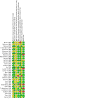

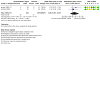
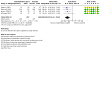
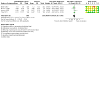

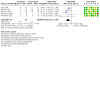





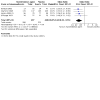






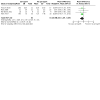

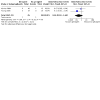

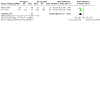
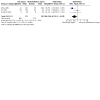
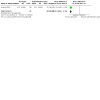
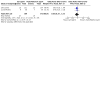
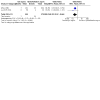



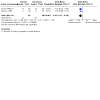
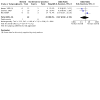

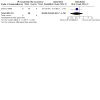
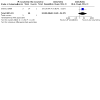

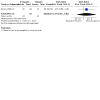


Update of
-
Fluid and pharmacological agents for adhesion prevention after gynaecological surgery.Cochrane Database Syst Rev. 2014 Jul 9;(7):CD001298. doi: 10.1002/14651858.CD001298.pub4. Cochrane Database Syst Rev. 2014. Update in: Cochrane Database Syst Rev. 2020 Jul 17;7:CD001298. doi: 10.1002/14651858.CD001298.pub5. PMID: 25005450 Updated.
References
References to studies included in this review
Brown 2007 {published data only}
-
- Brown CB, Luciano AA, Martin D, Peers E, Scrimgeour A, diZerega GS. Adept (icodextrin 4% solution) reduces adhesions after laparoscopic surgery for adhesiolysis: a double-blind, randomised, controlled study. Fertility and Sterility 2007;88(5):1413-26. - PubMed
-
- Peers EM, Brown CB, Adept Adhesion Study Group. American Fertility Society score as a measure of effectiveness of 4% icodextrin in a pivotal adhesion reduction trial in the USA. Fertility and Sterility 2005;84(Suppl 1):S160.
Buttram 1983 {published data only}
-
- Buttram V, Malinak R, Cleary R, Cohen S, Cowan B, Daniell J, et al, Adhesion Study Group. Reduction of postoperative pelvic adhesions with intraperitoneal 32% dextran 70: a prospective, randomized clinical trial. Fertility and Sterility 1983;40:612-9. - PubMed
Cheong 2017 {published data only}ISRCTN1833588
Coddington 2009 {published data only}
-
- Coddington C, Grow D, Ahmed M, Toner J, Cook E, Diamond M. Gonadotropin-releasing hormone agonist pretreatment did not decrease postoperative adhesion formation after abdominal myomectomy in a randomized control trial. Fertility and Sterility 2009;91:1909-13. - PubMed
Diamond 1998 {published data only}
-
- Diamond MP. Reduction of de novo postsurgical adhesions by intraoperative pre coating with Sepracoat (HAL-C) solution: a prospective, randomized, blinded, placebo-controlled multicenter study. The Sepracoat Adhesion Study Group. Fertility and Sterility 1998;69(6):1067-74. - PubMed
Diamond 2003 {published data only}
-
- Diamon MP, Luciano A, Johns A, Dunn R, Young P, Bieber E. Reduction of postoperative adhesions by N, O-carboxymethylchitosan: a pilot study. Fertility and Sterility 2003;80(3):631-6. - PubMed
diZerega 2002 {published data only}
-
- diZerega GS, Verco SJ, Young P, Kettel M, Kobak W, Martin D, et al. A randomized, controlled pilot study of the safety and efficacy of 4% icodextrin solution in the reduction of adhesions following laparoscopic gynaecological surgery. Human Reproduction 2002;17(4):1031-8. - PubMed
Fossum 2011 {published data only}
-
- Fossum GT, Silverberg KM, Miller CE, Diamond MP, Holmdahl L. Gynecologic use of SepraSpray Adhesion Barrier for reduction of adhesion development after laparoscopic myomectomy: a pilot study. Fertility and Sterility 2011;96:487-91. - PubMed
Hellebrekers 2009 {published data only}
-
- Hellebrekers BWJ, Trimbos-Kemper TCM, Boesten L, Jansen FW, Kolkman W, Trimbos JB, et al. Preoperative predictors of postsurgical adhesion formation and the prevention of adhesions with plasminogen activator (PAPA-study): results of a clinical pilot study. Fertility and Sterility 2009;91(4):1204-14. - PubMed
Jansen 1985 {published data only}
-
- Jansen RPS. Failure of intraperitoneal adjuncts to improve the outcome of pelvic operations in young women. American Journal of Obstetrics and Gynecology 1985;153:363-71. - PubMed
Jansen 1988 {published data only}
-
- Jansen RPS. Failure of peritoneal irrigation with heparin during pelvic operations upon young women to reduce adhesions. Surgery, Gynecology & Obstetrics 1988;166:154-60. - PubMed
Jansen 1990 {published and unpublished data}
-
- Jansen RPS. Controlled clinical approaches to investigating the prevention of peritoneal adhesions. In: Treatment of Postsurgical Adhesions. Vol. 358. New York: Wiley-Liss Inc, 1990:177-92. - PubMed
Johns 2001 {published data only}
-
- Johns BD, Keyport GM, Hoehler F, diZerega G. Reduction of postsurgical adhesions with Intergel adhesion prevention solution: a multicenter study of safety and efficacy after conservative gynecologic surgery. Fertility and Sterility 2001;76(3):595-604. - PubMed
Larsson 1985 {published data only}
-
- Larsson B, Lalos O, Marsk L, Tronstad S-E, Bygdeman M, Pehrson S, Joelsson I. Effect of intraperitoneal instillation of 32% dextran 70 on postoperative adhesion formation after tubal surgery. Acta Obstetricia et Gynecologia Scandinavica 1985;64:437-41. - PubMed
Liu 2015 {published data only}
-
- Liu C, Lu Q, Zhang Z, Xue M, Zhang Y, Zhang Y, et al. A randomized controlled trial on the efficacy and safety of a new crosslinked hyaluronan gel in reducing adhesions after gynecologic laparoscopic surgeries. The Journal of Minimally Invasive Gynaecology 2015;22(5):853-63. - PubMed
-
- Liu C, Zhang Z, Lu Q, Zhang Z. The efficacy and safety of a new cross-linked hyaluronan hydrogel in the reduction of postsurgical adhesions after laparoscopic gynecological surgery: a randomized controlled trial. The Journal of Minimally Invasive Gynaecology 2014;21:S59-60.
Lundorff 2001 {published data only}
-
- Lundorff P, Geldorp H, Tronstad SE, Lalos O, Larsson B, Johns DB, et al. Reduction of postsurgical adhesions with ferric hyaluronate gel: a European study. Human Reproduction 2001;16(9):1982-8. - PubMed
Lundorff 2005 {published data only}
-
- Lundorff P, Donnez J, Korell M, Audebert AJM, Block K, diZerega GS. Clinical evaluation of a viscoelastic gel for reduction of adhesions following gynaecological surgery by laparoscopy in Europe. Human Reproduction 2004;20(2):514-20. - PubMed
Mais 2006 {published data only}
-
- Mais V, Bracco GI, Litta P, Gargiulo, Melis GB. Reduction of postoperative adhesions with an auto-crosslinked hyaluronan gel in gynaecological laparoscopic surgery: a blinded, controlled, randomised, multicentre study. Human Reproduction 2006;21(5):1248-54. - PubMed
Mettler 2004 {published data only}
-
- Mettler L, Audebert A, Lehmann-Willenbrock E, Schive K, Jacobs VR. Prospective clinical trial of SprayGel as a barrier to adhesion formation: an interim analysis. Journal of American Association of Gynecologic Laparoscopists 2003;10(3):339-44. - PubMed
-
- Mettler L, Audebert A, Lehmann-Willenbrock E, Schive-Peterhansi K, Jacobs V. A randomized prospective, controlled, multicenter clinical trial of a sprayable, site specific adhesion barrier system in patients undergoing myomectomy. Fertility and Sterility 2004;82(2):398-404. - PubMed
-
- Mettler L. Pelvic adhesions: laparoscopic approach. Annals of the New York Academy of Sciences 2003;997:255-68. - PubMed
Mettler 2008 {published data only}
-
- Mettler L, Hucke J, Bojahr B, Tinneberg HR, Leyland N, Avelar R. A safety and efficacy study of a resorbable hydrogel for reduction of post-operative adhesions following myomectomy. Human Reproduction 2008;23(5):1093-100. - PubMed
Pellicano 2003 {published data only}
-
- Pellicano M, Bramante S, Cirillo D, Palomba S, Bifulco G, Zullo F, et al. Effectiveness of autocrosslinked hyaluronic acid gel after laparoscopic myomectomy in infertile patients: a prospective, randomized, controlled study. Fertility and Sterility 2003;80(2):441-4. - PubMed
Querleu 1989 {published data only}
-
- Querleu D, Vankeerberghen-Deffense F, Bouteville C. The effect of noxytioline and systemic corticosteroids in infertility surgery. A prospective randomized study [Traitement adjuvant des plasties tubaires. Etude prospective randomisee des corticoides par voie generale et de la noxytioline]. Journal de Gynecologie Obstetrique et Biologie de la Reproduction 1989;18(7):935-40. - PubMed
Rock 1984 {published data only}
-
- Rock JA, Siegler AM, Boer Miesel M, Haney AF, Rosenwaks Z, Pardo-Vargas F, et al. The efficacy of postoperative hydrotubation: a randomized prospective multicenter clinical trial. Fertility and Sterility 1984;42:373-6. - PubMed
Rose 1991 {published data only}
-
- Rose B, MacNeill C, Larrain R, Kopreski M. Abdominal instillation of high-molecular-weight dextran or lactated Ringer's solution after laparoscopic surgery. Journal of Reproductive Medicine 1991;36:537-9. - PubMed
Rosenberg 1984 {published data only}
-
- Rosenberg SM, Board JA. High-molecular weight dextran in human infertility surgery. American Journal of Obstetrics and Gynecology 1984;148:380-5. - PubMed
Sites 1997 {published data only}
-
- Sites CK, Jensen BA, Glock JL, Blackman JA, Badger GJ, Joh JV, et al. Transvaginal ultrasonographic assessment of Hyskon and lactated Ringer's solution instillation after laparoscopy. A randomized, controlled trial. Journal of Ultrasound Medicine 1997;16(3):195-9. [MEDLINE: ] - PubMed
Tchartchian 2014 {published data only}
-
- Tchartchian G, Hackethal A, Herrmann A, Bojahr B, Wallwiener C, Ohlinger R, et al. Evaluation of SprayShieldTM Adhesion Barrier in a single center: randomized controlled study in 15 women undergoing reconstructive surgery after laparoscopic myomectomy. Archives of Gynecology and Obstetrics 2014;290(4):697-704. [PMID: ] - PubMed
Ten Broek 2012 {published data only}
Thornton 1998 {published data only}
-
- Thornton MH, Johns DB, Campeau JD, Hoehler F, DiZerega GS. Clinical evaluation of 0.5% ferric hyaluronate adhesion prevention gel for the reduction of adhesions following peritoneal cavity surgery: open label pilot study. Human Reproduction 1998;13(6):1480-5. - PubMed
Trew 2011 {published data only}
-
- Trew G, Pistofidis G, Pados G, Lower A, Mettler L, Wallweiner D, et al. Gynaecological endoscopic evaluation of 4% icodextrin solution: a European, multicentre, double-blind, randomised study of the efficacy and safety in the reduction of de novo adhesions after laparoscopic gynaecological surgery. Human Reproduction 2011;26(8):2015-27. - PubMed
Trew 2017 {published data only}
-
- Trew G, Pistofidis G, Ziegler N, Korrell M, Brucker S, Ritter H, et al. A first-in-human, randomized, controlled, subject- and reviewer-blinded study of a degradable hydrogel adhesion barrier spray applied laparoscopically to all sites of surgical trauma following gynecologic laparoscopic surgery. Journal of Minimally Invasive Gynaecology 2014;21:S90.
-
- Trew GH, Pistofidis GA, Brucker SY, Kraemer B, Ziegler NM, Korell M, et al. Twelve month follow-up of a first-In-human (FIH), randomized, controlled, subject- and reviewer-blinded study of a degradable hydrogel adhesion barrier spray (Actamax Adhesion Barrier) applied to all sites of surgical trauma following gynecologic laparoscopic surgery. Journal of Minimally Invasive Gynaecology 2016;23:S203.
Young 2005 {published data only}
-
- Young P, Johns A, Templeman C, Witz C, Webster B, Ferland R, et al. Reduction of postoperative adhesions for laparoscopic gynaecological surgery with Oxiplex/AP gel: a pilot study. Fertility and Sterility 2005;84(5):1450-6. - PubMed
References to studies excluded from this review
Abu‐Elhasan 2014 {published data only}
-
- Abu-Elhasan AM, Abdellah MS, Hamed HO. Safety and efficacy of postoperative continuous intra-peritoneal wash with lactated Ringer's for minimizing post-myomectomy pelvic adhesions: a pilot clinical trial. European Journal of Obstetrics, Gynecology, and Reproductive Biology 2014 Dec;183:78-82. - PubMed
Diamond 2011 {published data only}
-
- Diamond MP, Korell M, Martinez S, Kurman E, Kamar M, Adhexil Adhesion Study Group. A prospective, controlled, randomized, multicenter, exploratory pilot study evaluating the safety and potential trends in efficacy of Adhexil. Fertility and Sterility 2011;95:1086-90. - PubMed
DiZerega 2007 {published data only}
-
- DiZerega GS, Coad J, Donnez J. Clinical evaluation of endometriosis and differential response to surgical therapy with and without application of Oxiplex/AP* adhesion barrier gel. Fertility and Sterility 2007;87:485-9. - PubMed
Imai 2003 {published data only}
-
- Imai A, Sugiyama T, Furui A, Takahashi S, Tamaya T. Gonadotrophin-releasing hormones agonist therapy increases peritoneal fibrinolytic activity and prevents adhesion formation after myomectomy. Journal of Obstetrics and Gynaecology 2003;23(6):660-3. - PubMed
Johns 2003 {published data only}
-
- Johns DA, Ferland R, Dunn R. Initial feasibility study of a sprayable hydrogel adhesion barrier system in patients undergoing laparoscopic ovarian surgery. Journal of the American Association of Gynecologic Laparoscopists 2003;10(3):334-8. - PubMed
Pellicano 2005 {published data only}
-
- Pellicano M, Guida M, Bramante S, Acunzo G, Di Spiezio Sardo A, Tommaselli G, et al. Reproductive outcome after autocrosslinked hyaluronic acid gel application in infertile patients who underwent laparoscopic myomectomy. Fertility and Sterility 2005;83:498-500. - PubMed
Swolin 1967 {published data only}
-
- Swolin K. The effect of a massive Intraperitoneal dose of a glucocorticoid on the formation of postoperative adhesions. Clinical studies using laparoscopy in patients operated on for extrauterine pregnancy [Die einwirkung von grossen intraperitonealen dosen glukokortikoid auf die bildung von postoperativen adhasionen]. Acta Obstetricia et Gynaecologica Scandinavica 1967;46(2):204-10. - PubMed
Tsuji 2005 {published data only}
-
- Tsuji S, Takahashi K, Yomo H, Fujiwara M, Kita N, Takebayashi K, et al. Effectiveness of antiadhesion barriers in preventing adhesion after myomectomy in patients with uterine leiomyoma. European Journal of Obstetrics and Gynecology 2005;123:244-8. - PubMed
Tulandi 1985 {published data only}
-
- Tulandi T. Effect of intraperitoneal 32% dextran 70 on blood coagulation and serum electrolytes. Journal of Reproductive Medicine 1985;30:431-4. - PubMed
Tulandi 1991 {published data only}
-
- Tulandi T. Effects of fibrin sealant on tubal anastomosis and adhesion formation. Fertility and Sterility 1991;56:136-8. - PubMed
References to studies awaiting assessment
Hudecek 2012 {published data only}
-
- Hudecek R, Ivanova Z, Smerdova M, Pankova S, Krajcovicova R. Effect of GnRH analogues pre-treatment on myomectomy outcomes in reproductive age women. Ceska Gynekologie / Ceska Lekarska Spolecnost J. Ev. Purkyne 2009;77(2):109-17. - PubMed
Litta 2013 {published data only}
-
- Litta P, Pluchino N, Freschi L, Borgato S, Angioni S. Evaluation of adhesions after laparoscopic myomectomy using the Harmonic Ace and the auto-crosslinked hyaluronan gel vs Ringer's lactate solution. Clinical and Experimental Obstetrics and Gynecology 2013;2:210-4. - PubMed
Robertson 2018 {published data only (unpublished sought but not used)}
-
- Robertson LM, Rislund DC, Lim, HJ, Pierson RA, Tulandi T, Gargiulo AR, et al. A novel therapeutic approach to prevent adhesion: a double blind randomized study (DBRCT) of intraperitoneal L-Alanyl-L-Glutamine (A-G or EvitarTM) for the prevention of adhesion in laparoscopic myomectomies. The Journal of Minimally Invasive Gynaecology 2018;25(7):S158.
Additional references
Ahmad 2020
ASRM 2013
-
- Practice Committee of American Society for Reproductive Medicine in collaboration with Society of Reproductive Surgeons. Pathogenesis, consequences, and control of peritoneal adhesions in gynecologic surgery: a committee opinion. Fertility and Sterility 2013;99(6):1550-5. - PubMed
Cheong 2011
-
- Cheong Y, Sadek K, Watson A, Metwally M, Li TC. Adhesion reduction agents in gynaecological procedures: can NHS afford it? Journal of Obstetrics and Gynaecology 2011;31:631-5. - PubMed
De Wilde 2007
-
- De Wilde RL, Trew G. Postoperative abdominal adhesions and their prevention in gynaecological surgery. Expert consensus position. Part 2—steps to reduce adhesions. Gynaecological Surgery 2007;4(4):243-53.
De Wilde 2012
Diamond 2001
-
- Diamond MP, Freeman ML. Clinical implications of postsurgical adhesions. Human Reproduction Update 2001;7:567-76. - PubMed
GRADEpro GDT [Computer program]
-
- McMaster University (developed by Evidence Prime, Inc.) GRADEpro GDT. Version accessed 4 May 2020. Hamilton (ON): McMaster University (developed by Evidence Prime, Inc.).Available at gradepro.org.
Hammoud 2004
-
- Hammoud A, Gago LA, Diamond MP. Adhesions in patients with chronic pelvic pain: a role for adhesiolysis? Fertility and Sterility 2004;82:1483-91. - PubMed
Higgins 2011
-
- Higgins JPT, Green S, editor(s). Cochrane Handbook for Systematic Reviews of Interventions Version 5.1.0 (updated March 2011). The Cochrane Collaboration, 2011. Available from handbook.cochrane.org.
Hosie 2001
-
- Hosie K, Gilbert JA, Kerr D, Brown CB, Peers EM. Fluid dynamics in man of an intraperitoneal drug delivery solution: 4% icodextrin. Drug Delivery 2001;8:9-12. - PubMed
Kumar 2009
Lower 2000
-
- Lower AM, Hawthorn RJ, Ellis H, O'Brien F, Buchan S, Crowe AM. The impact of adhesions on hospital readmissions over ten years after 8849 open gynaecological operations: an assessment from the Surgical and Clinical Adhesions Research Study. BJOG 2000;107:855-62. - PubMed
Lower 2004
-
- Lower AM, Hawthorn RJ, Clark D, Boyd JH, Finlayson AR, Knight AD, et al. Adhesion-related readmissions following gynaecological laparoscopy or laparotomy in Scotland: an epidemiological study of 24 046 patients. Human Reproduction 2004;19:1877-85. - PubMed
Mais 2012
-
- Mais V, Cirronis MG, Peiretti M, Ferrucci G, Cossu E, Melis GB. Efficacy of auto-crosslinked hyaluronan gel for adhesion prevention in laparoscopy and hysteroscopy: a systematic review and meta-analysis of randomized controlled trials.. European Journal of Obstetrics, Gynecology, and Reproductive Biology 2012 January;160(1):1-5. - PubMed
Okabayashi 2014
-
- Okabayashi K, Ashrafian H, Zacharakis E, Hasegawa H, Kitagawa Y, Athanasiou T, et al. Adhesions after abdominal surgery: a systematic review of the incidence, distribution and severity. Surgery Today 2014;44(3):405-20. - PubMed
Robertson 2010
-
- Robertson D, Lefebvre G, Leyland N, Wolfman W, Allaire C, Awadalla A, et al, Society of Obstetricians and Gynaecologists of Canada. SOGC clinical practice guidelines: adhesion prevention in gynaecological surgery. International Journal of Gynaecology and Obstetrics 2010;111(2):193-7. - PubMed
Tang 2006
US Food and Drug Administration 2016
-
- US Food and Drug Administration. MedWatch: Managing Risks at the FDA. https://www.fda.gov/drugs/drug-information-consumers/medwatch-managing-r... [Accessed 23.06.2020].
Van Den Beukel 2017
-
- Van den Beukel BA, Ree R, Leuven S, Bakkum EA, Strik C, Goor H, et al. Surgical treatment of adhesion-related chronic abdominal and pelvic pain after gynaecological and general surgery: a systematic review and meta-analysis. Human Reproduction Update 2017;23(3):276-88. [DOI: ] - PubMed
Wilson 2002
-
- Wilson MS, Menzies D, Knight AD, Crowe AM. Demonstrating the clinical and cost effectiveness of adhesion reduction strategies. Colorectal Disease 2002;4:355-60. - PubMed
References to other published versions of this review
Ahmad 2014
Metwally 2006
Watson 2000
-
- Watson A, Vandekerckhove, Lilford R. Subfertility: Pelvic surgery: Pharmacological and liquid adjuncts to prevent adhesions. Cochrane Database of Systematic Reviews 2000, Issue 4. [DOI: 10.1002/14651858.CD001298] - DOI
Publication types
MeSH terms
Substances
LinkOut - more resources
Full Text Sources
Other Literature Sources
Medical

